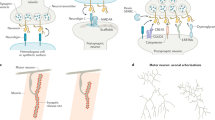Abstract
The passion in the scientific endeavors of Marshall Warren Nirenberg had been his quest for knowledge regarding the storage, retrieval, and processing of information in the cell. After deciphering the genetic code for which he shared the Nobel Prize in Physiology and Medicine in 1968, Nirenberg devoted his attention to unraveling the mysteries in the most complex cellular organization in the body, i.e., the nervous system, especially those governing neuronal development, plasticity, and synaptogenesis. During the tenure of the primary author (RR) as a postdoctoral Staff Fellow in the Nirenberg laboratory in the late seventies to early eighties, he had the opportunity of working on projects related to what Nirenberg used to broadly define as the “synaptic code.” The major aspects of these projects dealt with the functional macromolecules relevant to neuronal growth, organization, lineage, selectivity, stabilization, synaptogenesis, and functions such as neuroexocytosis. This author’s emphasis was particularly on voltage-gated calcium channels that regulate stimulus-induced neurotransmitter release. One central as well as crucial theme in these studies was the fact that the neurons had to be mature and differentiated in order to study these entities (Science 222: 794–799, 1983; Cold Spring Harb Symp Quant Biol 48: 707–715, 1983). In this communication, we illustrate how did this basic knowledge, i.e., cell maturation-dependent properties being essential for neuronal functions, led to a successful experimental design and demonstration of the validity of the targeted neurologic therapeutic delivery approach based on recombinant botulinum toxin serotype A (BoNT/A) heavy chain (rHC) serving as a neuron-specific targeting molecule (BMC Pharmacol 9: 12, 2009).



Similar content being viewed by others
References
Inoue K, Fujinaga Y, Watanabe T, Ohyama T, Takeshi K, Moriishi K, Nakajima H, Inoue K, Oguma K (1996) Molecular composition of Clostridium botulinum type A progenitor toxins. Infect Immun 64:1589–1594
Li L, Singh BR (1999) Structure-function relationship of clostridial neurotoxins. J Toxicol 8:95–112
Nirenberg M, Wilson S, Higashida H, Rotter A, Krueger K, Busis N, Ray R, Kenimer JG, Alder M (1983a) Modulation of synapse formation by cyclic adenosine monophosphate. Science 222:794–799
Nirenberg M, Wilson S, Higashida H, Rotter A, Krueger K, Busis N, Ray R, Kenimer JG, Alder M, Fukui H (1983b) Synapse formation by neuroblastoma hybrid cells. Cold Spring Harb Symp Quant Biol 48:707–715
Singh BR (2000) Intimate details of the most poisonous poison. Nat Struct Biol 7:617–619
Zhang P, Ray R, Singh BR, Li D, Adler M, Ray P (2009) An efficient drug delivery vehicle for botulism countermeasure. BMC Pharmacol 9:12
Acknowledgments
This study was supported by the Defense Threat Reduction Agency—Joint Science and Technology Office, Medical S&T Division.
Disclaimer
The opinions, interpretations, conclusions, and recommendations are those of the author and are not necessarily endorsed by the U.S. Army or the Department of Defense.
Author information
Authors and Affiliations
Corresponding author
Additional information
Research was conducted in compliance with the Animal Welfare Act and other federal statutes and regulations relating to animals and experiments were conducted in accordance with the principles stated in the Guide for the Care and Use of Laboratory Animals (National Research Council, Publication no. 85-23, 1996), and the Animal Welfare Act of 1966 (P.L. 89-544), as amended.
Rights and permissions
About this article
Cite this article
Ray, R., Zhang, P. & Ray, P. Neuronal Functions Associated with Endo- and Exocytotic Events-cum-Molecular Trafficking may be Cell Maturation-Dependent: Lessons Learned from Studies on Botulism. Cell Mol Neurobiol 31, 861–865 (2011). https://doi.org/10.1007/s10571-011-9678-1
Received:
Accepted:
Published:
Issue Date:
DOI: https://doi.org/10.1007/s10571-011-9678-1




